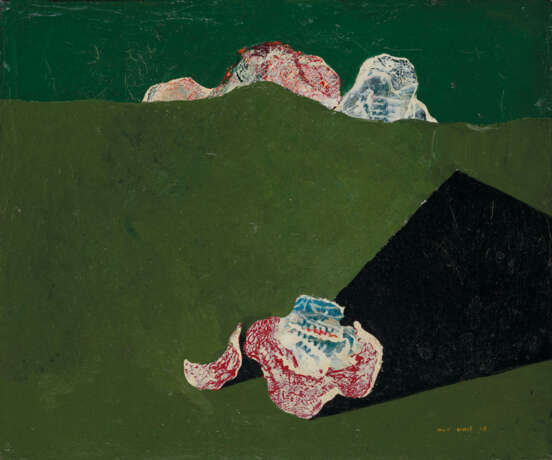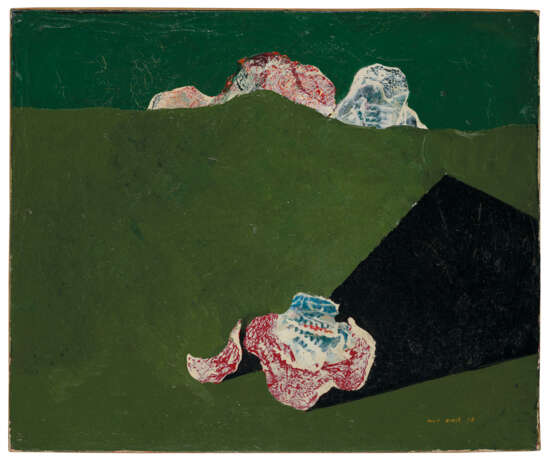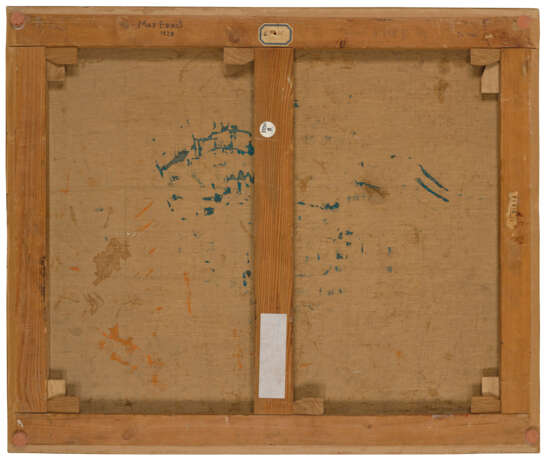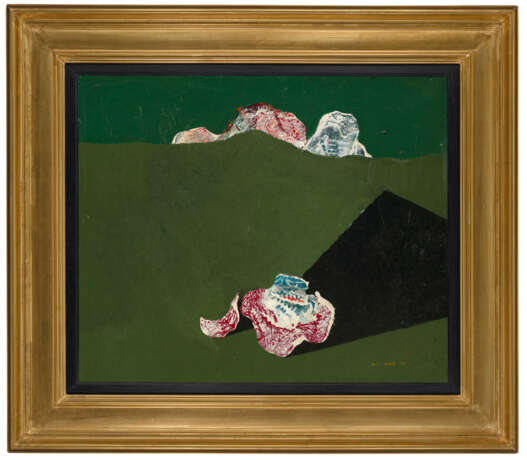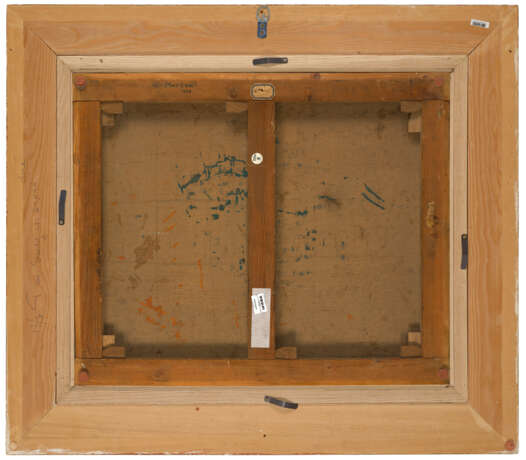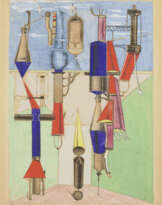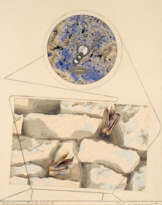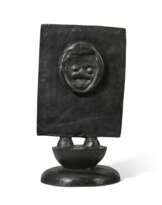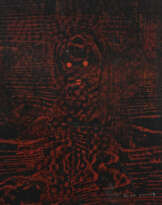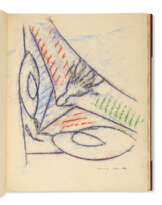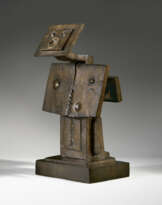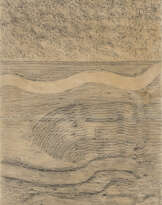ID 1178579
Lot 127 | Max Ernst (1891-1976)
Estimate value
€ 100 000 – 150 000
Fleurs sur fond vert
signé et daté 'max ernst 28' (en bas à droite)
huile et grattage sur toile
53.7 x 65 cm.
Peint en 1928
signed and dated 'max ernst 28' (lower right)
oil and grattage on canvas
21 1⁄8 x 25 ½ in.
Painted in 1928
Provenance
Jeanne Fouque, Paris.
Acquis auprès de celle-ci par la famille du propriétaire actuel en 1953.
Further details
Jürgen Pech a confirmé l'authenticité de cette œuvre.
Peint en 1928, Fleurs sur fond vert appartient à une série réalisée par Max Ernst dans la continuité des collages et frottages exécutés sur le même thème au début de la décennie. La découverte d'une nouvelle technique baptisée "grattage" permet à l'artiste d'adapter à l'huile l'effet de "frottage" initialement exploré sur papier, pour des nouveaux développements sur toile. Après avoir appliqué des couches successives de peinture de différentes couleurs sur la toile posée sur une surface dure en relief, Max Ernst prélève la matière sèche au couteau, révélant un kaléidoscope de couleur dont l'aspect doit autant aux choix de l'artiste qu'au hasard des effets produits par la superposition des pigments. Pour accentuer la présence des éléments grattés et mettre en valeur le grain de leur surface, ceux-ci sont généralement, comme dans la présente oeuvre, apposés sur de larges aplats de couleur.
Evoquant les étranges structures organiques ainsi révélées, tout à la fois fleur, coquillage et formation géologique, Ludger Derenthal écrit: "Les fleurs-coquillages apparaissent d'abord par deux et en petits groupes; plus tard, des jardins nocturnes entiers en seront plantés. Il convient de se remettre en mémoire ici les peintures de planches d'études botaniques à l'époque Dada, où les plantes étaient elles aussi isolées et placées sur un horizon bas [...] Les Fleurs-coquillages sont d'un attrait coloriste délicat. Le peintre remplace le collagiste. Max Ernst se situe ainsi dans la tradition de James Ensor et d'Odilon Redon, artistes chez qui des coquillages se transforment occasionnellement en fleurs. C'est là une technique brillante qui permet de mettre à profit la valeur picturale des deux sujets" (Max Ernst, Paris, 1992, p. 124).
Painted in 1928, Fleurs sur fond vert is part of a series realised by Max Ernst as an extension of the collages and frottages (rubbings) on the same theme made at the beginning of the decade. The discovery of a new technique called grattage (scraping) enabled the artist to apply to painting the effect of the "frottage" initially explored on paper, and consequently to create new developments on canvas. After having applied successive layers of different colours of paint to the canvas laid on to a hard-textured surface, Ernst removed the dry medium with a knife, revealing a kaleidoscope of colours beneath, the aspect of which owes as much to the artist's choice as to the effects produced by the superposition of pigments. To accentuate the presence of scraped elements and highlight the grain of their surface, they are generally, as in the present work, shown against large coloured areas. With reference to the strange organic structures revealed in this manner, simultaneously flower, shell and geological form, Ludger Derenthal writes "The shell-flowers first appear in twos and in small groups; later entire nocturnal gardens would be planted. At this point, one should remember the paintings of botanical studies of the Dada period, where plants were also isolated and placed over a low horizon. [...] The Shell-flowers are delicately and attractively coloured. The painter replaces the collagist. Max Ernst follows the traditions of James Ensor and Odilon Redon, who also occasionally transformed shells into flowers. It is a brilliant technique which explores the painterly value of both subjects" (Max Ernst, Paris, 1992, p. 124).
| Artist: | Max Ernst (1891 - 1976) |
|---|---|
| Applied technique: | Oil on canvas |
| Auction house category: | Paintings, Watercolors, Drawings, Paintings |
| Artist: | Max Ernst (1891 - 1976) |
|---|---|
| Applied technique: | Oil on canvas |
| Auction house category: | Paintings, Watercolors, Drawings, Paintings |
| Address of auction |
CHRISTIE'S 9 Avenue Matignon 75008 Paris France | ||||||||||||||
|---|---|---|---|---|---|---|---|---|---|---|---|---|---|---|---|
| Preview |
| ||||||||||||||
| Phone | +33 (0)1 40 76 85 85 | ||||||||||||||
| Fax | +33 (0)1 40 76 85 86 | ||||||||||||||
| Conditions of purchase | Conditions of purchase | ||||||||||||||
| Shipping |
Postal service Courier service pickup by yourself | ||||||||||||||
| Payment methods |
Wire Transfer | ||||||||||||||
| Business hours | Business hours
|
